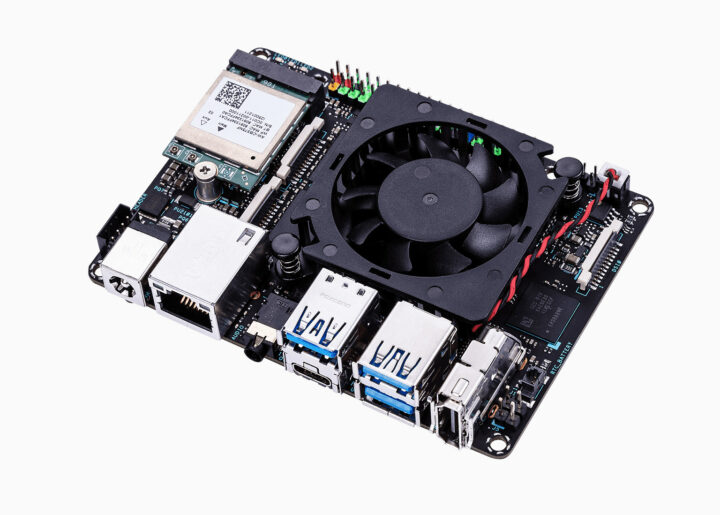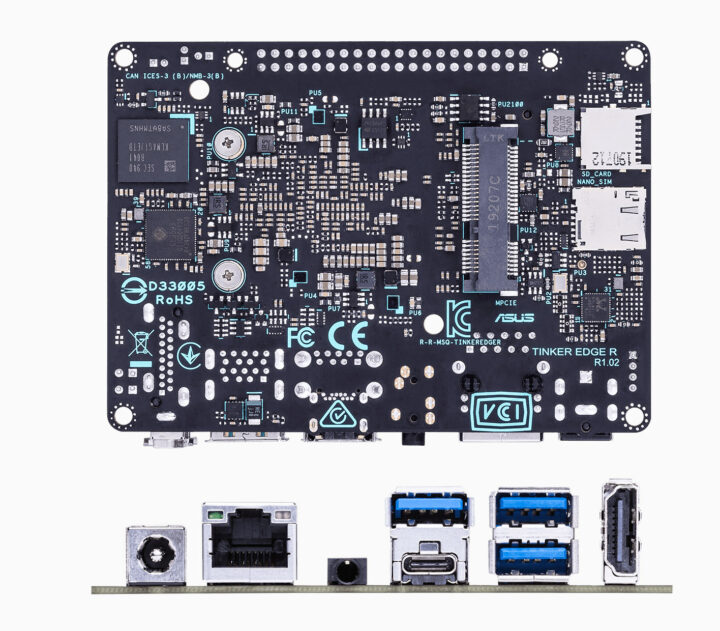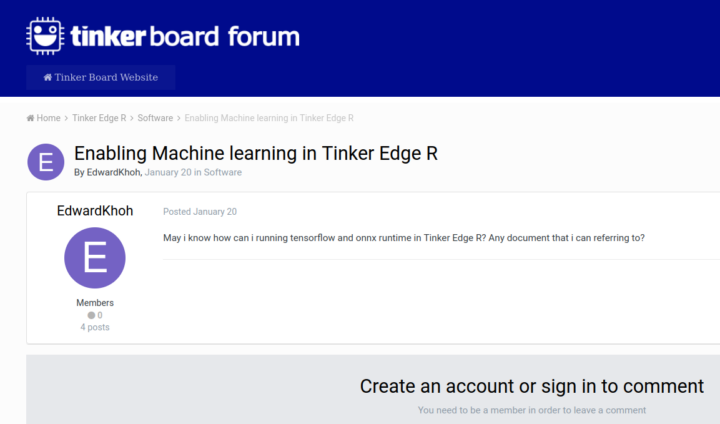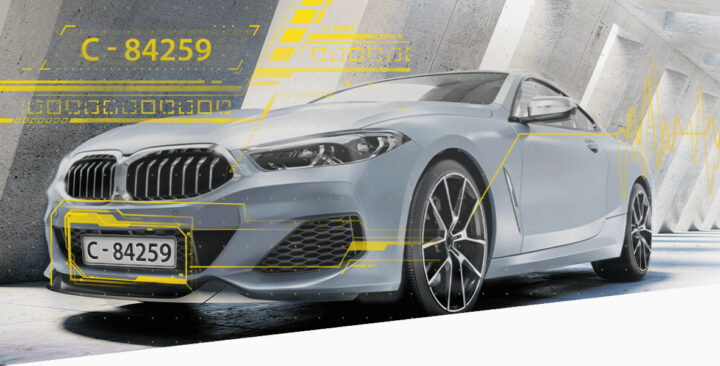ASUS Tinker Edge R Pico-ITX single board computer with Rockchip RK3399Pro AI processor was first unveiled in 2019 with 6GB RAM, but a cheaper 3GB RAM version with 2GB RAM for the CPU, and 1GB RAM with the integrated NPU just showed up in my news feeds.
Whether it comes with 3GB or 6GB RAM, the Tinker Edge R board should mostly be interesting for AI accelerated workload thanks to the 3 TOPS built-in NPU, as well as the two MIPI CSI camera interfaces.
ASUS Tinker Edge R (3GB) SBC specifications:
- SoC – Rochchip RK3399Pro hexa-core big.LITTLE processor with 2x Cortex A72 cores up to 1.8 GHz, 4x Cortex A53 cores @ 1.4 GHz, an Arm Mali-T860 MP4 GPU up to 800 MHz with OpenGL ES 1.1 to 3.2, OpenVG1.1, OpenCL 1.2 and DX 11 support, and NPU delivering up to 3.0 TOPS
- System Memory – 2 GB dual-channel LPDDR4 memory for system, 1 GB LPDDR3 memory for NPU
- Storage – 16GB eMMC flash, micro SD card slot
- Video Output – HDMI with CEC, DisplayPort via USB-C port, up to 2x 4-lane MIPI DSI connector (one is multiplexed with MIPI CSI)
- Audio – 3.5mm audio jack, plus S/PDIF Tx and PCM/I2S on header
- Camera – Up to 2x MIPI CSI-2 connectors (one multiplexed with MIPI DSI)
- Connectivity – Gigabit Ethernet (RTL8211F-CG), M.2 module with 802.11ac WiFi 5 2T2R and Bluetooth 5.0
- USB – 3x USB 3.1 Gen1 Type-A ports, 1x USB 3.1 Gen 1 type-C OTG port
- Expansion
- mPCIe slot for 4G/LTE extended; nanoSIM card slot on-board
- 40-pin GPIO header with the same pinout as the original Tinker board with up to 2x I2C, 2x SPI, 2x UART, 3x PWM, I2S, and 28x GPIOs
- Misc – RTC battery header, power-on header, recovery header, reset header, DC fan header, NPU UART header
- Power Supply – 12V to 19V input via power barrel jack or header
- Dimensions – 100 x 72mm (Pico-ITX form factor)
- Temperature Range – Operating: 0°C to 60°C; storage: -40°C ~ 80°C
- Humidity – 0% ~ 85% (Non condensing)
ASUS provides both Android 9 and Debian images for the board. A board announced in 2019, and officially released around the end of 2020 should have pretty good support and documentation. So let’s have a look. The download page has a new Debian 10 image released on March 2022 (good), while the Android 9 image has not been updated since December 2020. Maybe most users go with the Debian images.
The Getting Started guide explains how to flash the firmware, configure the system, and control peripherals like GPIO, I2C, SPI, UART, PWM in detail, but there’s nothing about the NPU at all, and no references to the RKNN Toolkit that should be used with the board. That may explain why none of the few reviews of the ASUS Tinker Edge R on the web shows anything about using the AI accelerator…
Luckily, ASUS runs a support forum, so we may be able to find help there…
Oh well, I can see somebody already asked on January 20, 2022, and no answer so far. But to be fair, another thread tells about the RKNN Toolkit mentioned above. It is still disappointing as users need to do a lot of browsing to find information about using the NPU. There’s also a Github account for ASUS Tinker Edge R with the Linux kernel and u-boot bootloader for Debian, plus ALPR repo for automatic license plate recognition which provides a real use case leveraging the NPU.
There’s some Python sample code, but one step of the instructions also reads “contact your business representative to get the latest ALPR docker image. Side load TAR file to Edge R”. So you can’t just clone the repo to try it out on your board, and I’m not sure people who bought the board of Amazon or Aliexpress can get the docker image.
I found the ASUS Tinker Edge R board with 3GB RAM on Aliexpress for $179 including shipping, but the 6GB model is more common since it’s been around for a while, and besides Aliexpress ($220), it’s also sold on Amazon ($249.99), and several other shops, and you may be able to find a local distributor if interested.

Jean-Luc started CNX Software in 2010 as a part-time endeavor, before quitting his job as a software engineering manager, and starting to write daily news, and reviews full time later in 2011.
Support CNX Software! Donate via cryptocurrencies, become a Patron on Patreon, or purchase goods on Amazon or Aliexpress








